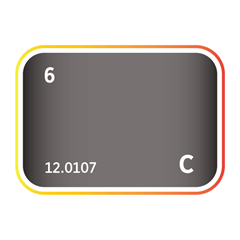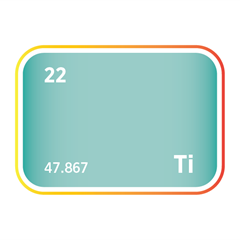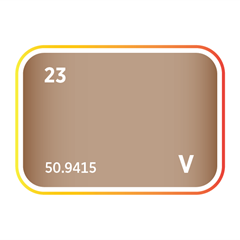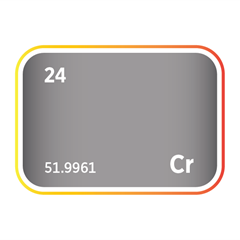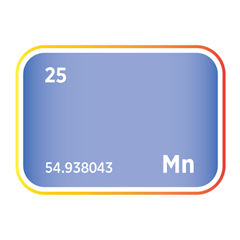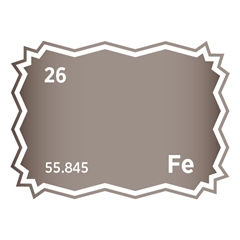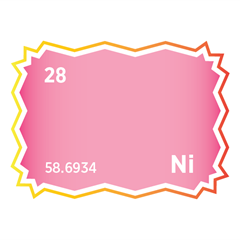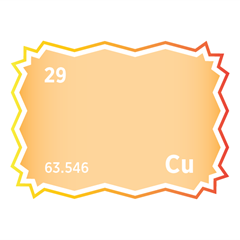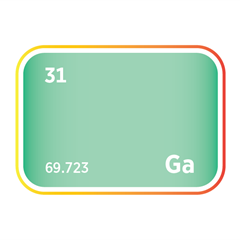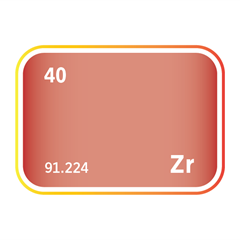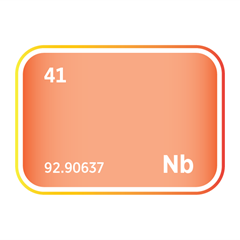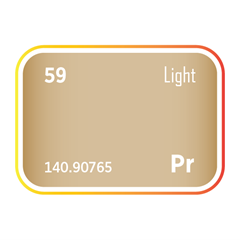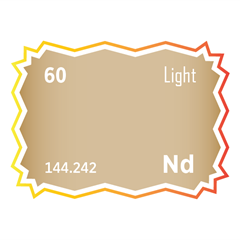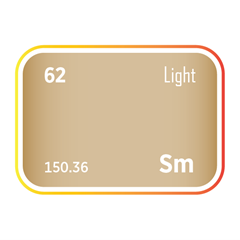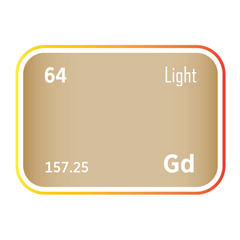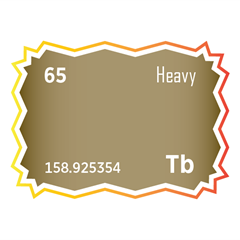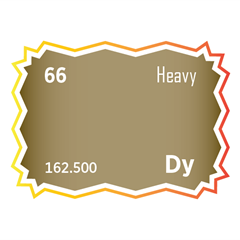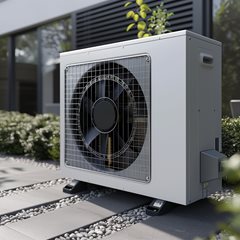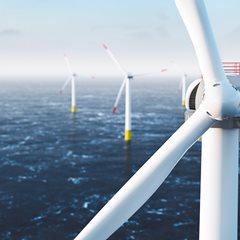Magnets
Critical minerals, policy, and the energy transition
Critical Minerals and Magnets
Magnetic materials are essential to modern technology, supporting industries such as transport, energy, defence, electronics, and healthcare. From powerful neodymium magnets in electric vehicle motors and wind turbines to samarium cobalt alloys in aerospace and military systems, magnets enable efficient energy conversion that drives global innovation. At the core of magnetic performance lies a group of critical minerals that provide the magnetic, structural, and thermal properties needed for high efficiency. These include rare earth elements such as neodymium, praseodymium, dysprosium, and terbium, along with supporting metals such as cobalt, iron, and nickel. Together they deliver exceptional magnetic strength, temperature stability, and corrosion resistance, allowing compact and powerful designs for demanding environments. With the global shift toward electrification, clean energy, and advanced manufacturing, the supply security and sustainability of critical minerals have become major industrial priorities. Understanding how these elements support the production of permanent magnets and soft magnetic materials is vital for developing efficient motors, generators, and sensors used across renewable energy, electric mobility, defence systems, and electronic devices. We explore how critical minerals enable the production of advanced magnetic materials, their industrial applications across clean energy, mobility, defence, and electronics, and the technologies that are shaping the next generation of sustainable magnet systems, examining the relationship between critical minerals and magnetic materials, their key applications, supply chain challenges, and the emerging innovations.
Critical minerals used in magnets
The performance, availability, and security of magnetic materials depend on a tightly linked network of critical elements spanning the periodic table. At the core are the rare earth elements, surrounded by the transition metals and light alloying elements, which stabilise, reinforce, and optimise their behaviour, forming an interdependent materials ecosystem central to global technological competitiveness.
Rare earth elements (Nd, Pr, Dy, Tb, Sm, Gd, Y)
Rare earth elements enable the strongest known permanent magnets through their unique 4f electron interactions. Their distinctive 4f electron configurations produce strong magnetic moments and high coercivity, enabling alloys like NdFeB for high-strength applications such as traction motors and generators, SmCo for temperature-stable magnets in extreme environments, REBCO for high-field superconducting systems, TbDyFe (Terfenol-D) for magnetostrictive applications like vibration damping and actuation, and Gd₅Si₂Ge₂ for magnetocaloric cooling in cryotherapy and refrigeration. Neodymium and praseodymium dominate NdFeB magnets, while samarium, dysprosium, terbium, gadolinium, and yttrium enhance SmCo, REBCO, Terfenol-D, and Gd₅Si₂Ge₂ for specialised performance, including temperature stability, magnetocaloric effects, and high-field response.
These elements are heavily concentrated in China, which controls over 80% of global rare-earth magnet production. This geographic imbalance drives efforts in Japan, the EU, and the United States to diversify supply through recycling, substitution, and alternative alloy development, including Dy-free NdFeB and SmCo-based systems.
Ferromagnetic base metals (Fe, Co, Ni)
Iron, cobalt, and nickel form the magnetic backbone of both permanent and soft-magnetic systems. Iron is globally abundant and underpins nearly all magnetic structures, while cobalt and nickel, though less plentiful, contribute high Curie temperatures and structural integrity. Cobalt’s criticality arises from its dual demand in magnets and lithium-ion batteries, with more than 70% mined in the Democratic Republic of Congo, often refined in China. This has elevated cobalt to a material of strategic concern for defence and energy sectors.
Alloying and stabilising elements (B, C, N, Al, Si, Ti, V, Cr, Mn)
Light and transition metals control the fine-scale microstructure, coercivity, and electrical properties of magnets. The key alloying and stabilising elements are:
-
Boron defines the Nd₂Fe₁₄B lattice, enabling the highest magnetic energy density achieved in any bulk material. It is critical for modern permanent magnets used in electric motors and advanced energy systems.
-
Carbon and nitrogen refine grain boundaries and stabilise crystal phases, improving performance and durability in both hard and soft magnetic materials. Their control of microstructure is critical to magnet efficiency and longevity.
-
Aluminium and silicon reduce eddy-current losses in transformer steels, enhancing magnetic efficiency and grid performance. Their addition underpins lightweight, low-loss alloys vital for modern power systems.
-
Titanium, vanadium, and chromium provide oxidation resistance and mechanical strength in high-temperature magnets. These elements ensure structural integrity and stability in demanding thermal and mechanical environments.
-
Manganese, increasingly important in rare-earth-free systems such as MnBi and MnAlC, is a focus of sustainable-magnet research programs in the EU, Japan, and the US aimed at reducing reliance on neodymium.
Conductive and functional additives (Cu, Ga, Zr, Nb)
Copper, gallium, zirconium and niobium control grain refinement, electronic structure, and long-term stability.
-
Copper is used in diffusion barriers and coil windings for motors, enabling efficient power transfer in electrical and electronic systems. Gallium enhances magnetostriction in FeGa (Galfenol) alloys, complementing TbDyFe (Terfenol-D) in precision actuation for sensors, vibration control, and smart materials. Gallium is mainly obtained as a by-product of bauxite and zinc processing, with production concentrated in China, highlighting its strategic importance due to limited recovery and refining capacity.
-
Zirconium and niobium stabilize nanocrystalline and superconducting materials used in power electronics, accelerators, and MRI systems. Both metals are vital for high-temperature alloys and magnet technologies, with supply constrained by concentrated mining and limited refining capacity. Zirconium comes mainly from zircon in Australia, South Africa, and China, while niobium is extracted from Brazilian and Canadian pyrochlore ores.
Emerging and substitute elements (including hybrid systems)
-
Bismuth and manganese are gaining importance as non-magnetic and magnetic additives, respectively, in magnet manufacturing. Bismuth, though non-magnetic, improves corrosion resistance and machinability as a non-toxic, lead-free solder alternative, supporting cleaner and more circular production chains in electronics and defence. Manganese enables rare-earth-free systems like MnBi and MnAlC, reducing reliance on neodymium in sustainable magnet designs.
-
Hybrid systems combine magnetic and non-magnetic materials, including ferrite–metal and rare-earth–free composites, to optimise performance, cost, and sustainability in next-generation magnet designs.
Primary magnet and material taxonomy
SFA's comprehensive taxonomy of magnetic materials and their industrial applications provides a complete framework for understanding every major class of magnet currently in use or development. It begins with the elemental and alloy systems that define magnetic performance, from rare earth permanent magnets and soft magnetic composites to the advanced, hybrid, and functional materials that support next-generation technologies.
The taxonomy distinguishes key material families by their function and contribution to performance, including rare earth elements that provide high energy density and miniaturisation, transition metals that deliver ferromagnetic and structural strength, and interstitial or alloying elements that improve coercivity, resistivity, and processing behaviour. It also covers emerging magnet systems, such as nanocrystalline, amorphous, and rare-earth-free magnets, followed by functional magnetic materials such as magnetostrictive and magnetocaloric alloys that convert magnetic energy into motion or heat.
Industrial applications are organised by sector, showing how magnetic materials are used across clean energy, transport and mobility, electronics and computing, defence and aerospace, medical technology, and industrial automation. Additional categories include consumer electronics, space and extreme-environment systems, and mine processing, demonstrating the essential role of magnets in global innovation, sustainable energy, and modern infrastructure.
Finally, the taxonomy aligns magnetic technologies with wider industrial trends including electrification, miniaturisation, sustainable critical-mineral supply chains, and circular material recovery. It explains how critical elements such as neodymium, samarium, cobalt, dysprosium, and iron interact with advanced alloy chemistries and manufacturing techniques to deliver the next generation magnetic systems.
1) Clean energy and renewables
Magnetic materials are integral to the global energy transition, enabling efficient generation, conversion, and control of electrical power. Their combination of magnetic strength, temperature stability, and corrosion resistance underpins technologies that convert mechanical motion into clean electricity.
-
Wind turbines – Rare earth magnets enable the high-efficiency generators that drive modern wind turbines. Direct-drive systems using NdFeB magnets, alloyed with dysprosium or praseodymium for thermal stability and coercivity, eliminate multi-stage gearboxes, reducing mechanical losses by up to 50% and improving reliability. Samarium–cobalt magnets are applied in smaller, offshore, or high-temperature turbines where resistance to demagnetisation is critical. These materials support turbine capacities from 2 MW onshore to 15 MW offshore, sustaining efficiency and extending maintenance intervals.
-
Electric-vehicle traction systems – High-energy NdFeB permanent magnets, often enhanced through Dy diffusion for thermal resilience, enable compact, high-torque motors that power over 90% of electric vehicles (EVs). These magnets provide superior torque density and efficiency while maintaining performance across temperature ranges exceeding 180°C, bridging clean transport and renewable energy ecosystems.
-
Hydroelectric and tidal systems – Permanent-magnet synchronous generators (PMSGs) use SmCo and ferrite magnets housed in corrosion-resistant encapsulations for compact, maintenance-free operation in submerged or variable-pressure environments. These designs provide efficient energy conversion and high reliability for tidal stream, wave, and run-of-river installations, operating continuously under vibration and salinity exposure.
-
Solar tracking and power electronics – Hall-effect sensors and miniature NdFeB permanent magnets enable precise solar-array orientation, actuator control, and field-alignment systems, maximising solar capture efficiency. These components ensure accurate motion control and long-term alignment reliability in dual-axis trackers and photovoltaic inverters operating in harsh environmental conditions.
-
Hydrogen electrolysers and fuel cells – Soft magnetic materials such as FeSi and FeCo alloys optimise current control, inductors, and converter components, reducing energy loss and improving stack efficiency. Magnetic cores in power-conditioning units enhance current uniformity and enable precise electronic control across electrolysis and fuel-cell stacks, supporting the production and use of green hydrogen in grid and transport applications.
-
Grid converters and inverters – Nanocrystalline Fe-based soft magnetic cores (e.g., FINEMET, NANOPERM) improve energy conversion efficiency and suppress harmonics in high-frequency switching systems operating between 20–100 kHz. Their high permeability and low coercivity minimise eddy-current and hysteresis losses, extending reliability in solar, wind, and storage inverters used for distributed grid integration.
-
Wind-farm control and energy storage systems – Soft magnetic composites (SMCs) and FeSi laminations are employed in transformers, converters, and energy-storage inverters, optimising power conditioning and grid stability. Amorphous magnetic cores further reduce hysteresis and core losses, supporting efficient load balancing and reactive power control in large-scale renewable installations.
Critical magnetic minerals and alloys involved:
-
Wind turbines: Nd, Pr, Dy, Sm, Co, Fe, B (NdFeB, NdFeB–Dy/Pr; SmCo)
-
Electric-vehicle traction systems: Nd, Pr, Dy, Fe, Co, B (NdFeB–Dy/Pr; FeCo)
-
Hydroelectric and tidal systems: Sm, Co, Fe (SmCo; ferrite magnets)
-
Solar tracking and power electronics: Nd, Fe, B (NdFeB micro-magnets for sensors and actuators)
-
Hydrogen electrolysers and fuel cells: Fe, Co (FeSi, FeCo)
-
Grid converters and inverters: Fe, Si, Nb (soft magnetic cores and nanocrystalline alloys — FINEMET: Fe–Si–B–Nb–Cu; NANOPERM: Fe–Nb–B)
-
Wind-farm control and energy-storage systems: Fe, Si (FeSi electrical steel; amorphous Fe–Si–B–C alloys)
2) Electronics and computing
Magnetic materials underpin modern information and communication technologies, enabling data storage, signal processing, and power management.
-
Hard-disk drives (HDDs) – High-energy NdFeB permanent magnets provide precise voice-coil actuation for read–write heads (remanence ≈ 1.4 T), ensuring nanometre-level head positioning accuracy in consumer, enterprise, and cloud data storage systems. Soft ferrite components in spindle motors manage flux control and rotational stability, reducing vibration and maintaining consistent read–write performance across billions of cycles.
-
Display and sensor modules – Miniature NdFeB and SmCo magnets enable precision haptic feedback, autofocus control, and image stabilisation in smartphones, AR/VR headsets, and compact imaging systems. Their high energy product and dimensional stability allow sub-millimetre actuators to deliver smooth mechanical motion with low power consumption and repeatable accuracy.
-
Magnetic sensors – Hall, anisotropic magnetoresistance (AMR), and giant magnetoresistance (GMR) sensors enable position, current, and rotational speed feedback with sub-millimetre precision. They are vital for automotive control, robotics, industrial automation, and medical instruments, translating magnetic field variations into real-time electrical signals for motion and safety systems.
-
Magnetic random-access memory (MRAM) – CoFeB/MgO magnetic tunnel junctions (MTJs) store data using spin-polarised electron tunnelling, combining non-volatility, high endurance, and radiation hardness. These devices support next-generation computing in aerospace, automotive control units, AI-edge processors, and defence electronics, replacing volatile SRAM in low-power embedded architectures.
-
Power supplies and converters – MnZn ferrite and nanocrystalline Fe-based cores minimise eddy-current and hysteresis losses in high-frequency DC–DC converters, chargers, and inverter systems, operating up to 500 kHz. These materials sustain high power density and thermal stability, ensuring compact, efficient power conditioning in servers, mobile devices, and renewable energy inverters.
-
Electromagnetic interference (EMI) suppression – Soft magnetic shielding alloys such as FeNi permalloy, amorphous FeSiB ribbons, and composite ferrites maintain GHz-range permeability stability, suppressing parasitic coupling and crosstalk in processors, radar systems, satellite electronics, and wireless communication modules. These materials ensure signal integrity and compliance with stringent EMC (electromagnetic compatibility) standards.
-
Quantum and spintronic components – Two-dimensional magnetic materials including CrI₃, Fe₃GeTe₂, and VSe₂ exhibit spin-dependent electron transport and tunable magnetoresistive effects, enabling spin logic, quantum tunnelling, and neuromorphic computing architectures. These emerging materials are under active development for ultra-fast, non-volatile memory and quantum information systems.
Critical magnetic materials and alloys involved:
-
Hard-disk drives: Nd, Pr, Dy, Fe, B, Mn, Zn, O (NdFeB–Dy/Pr; MnZn ferrite)
-
Display and sensor modules: Nd, Pr, Dy, Sm, Co, Fe, B (NdFeB–Dy/Pr; SmCo)
-
Magnetic sensors: Fe, Ni, Co, Gd, Mn (FeNi; Co/Cu; GdCo)
-
MRAM: Co, Fe, B, Mg, O (CoFeB/MgO)
-
Power supplies and converters: Fe, Mn, Zn, Si, B, Nb, Cu, O (MnZn ferrite; FINEMET; NANOPERM)
-
EMI suppression: Fe, Ni, Si, B, Mn, Zn (FeNi permalloy; FeSiB; MnZn ferrite)
-
Quantum and spintronic components: Fe, Co, Cr, V, Ge, Te, I, Se, Mg, O, B (CoFeB/MgO; CrI₃; Fe₃GeTe₂; VSe₂)
3) Transport and mobility
Magnetic materials power the electrification of global transport, combining compactness, torque density, and high-temperature performance across vehicles, aircraft, and ships.
Electric cars and light vehicles
-
Traction motors – Interior and surface permanent-magnet (IPM and SPM) topologies employ NdFeB magnets enhanced with Dy or Dy-free grain-boundary diffusion to maintain coercivity and flux retention under elevated temperatures. These designs achieve power ratings of 50–250 kW with efficiencies above 95%, supporting compact, high-performance drive units (used in sedans, SUVs, and performance EVs).
-
E-axles and in-wheel motors – Compact NdFeB rotor assemblies deliver high torque density, smooth regenerative braking, and reduced drivetrain losses in modular e-axle architectures. Integrated multi-motor systems enable front-, rear-, or all-wheel drive configurations with independent torque vectoring (applied in passenger EVs, light trucks, and performance hybrids).
-
Auxiliary motors – HVAC compressors, coolant and oil pumps, power steering systems, and window lifts use ferrite or NdFeB magnets to balance cost, efficiency, and thermal resilience under high-duty conditions. NdFeB improves torque density and miniaturisation, while ferrites support noise reduction and corrosion resistance (applied in passenger comfort and thermal management systems).
-
Power electronics magnetics – Nanocrystalline and ferrite cores (including FINEMET, Fe-based amorphous alloys, and MnZn ferrites) manage high-frequency switching between 20–100 kHz in DC–DC converters and traction inverters, reducing eddy-current losses and improving thermal efficiency (used in inverter control units and high-voltage junction boxes).
-
Onboard and wireless charging – MnZn and NiZn ferrite cores optimise magnetic coupling and minimise field leakage in 3.3–22 kW onboard chargers and 3–11 kW resonant wireless pads, ensuring efficient power transfer with minimal electromagnetic interference (used in home, fleet, and inductive public charging systems).
-
Sensors and feedback systems – Hall-effect, AMR, and GMR sensors with FeNi or CoFeB magnetic layers monitor rotor position, wheel speed, current flow, and pedal input, providing precise closed-loop control and safety redundancy (used in traction control, braking systems, and inverter feedback circuits).
-
Thermal design and coatings – Ni–Cu–Ni multilayer coatings or epoxy encapsulation protect NdFeB magnets against corrosion and oxidation, maintaining flux integrity up to 150–180°C hot-spot temperatures. Advanced coating systems extend durability under salt-spray and humidity conditions typical of automotive environments.
-
Magnet recycling – End–of–life demagnetisation and hydrogen decrepitation recovery processes allow the selective reclamation of Nd and Dy, supporting closed-loop magnet supply chains and reducing dependence on primary rare-earth mining (integrated into next-generation EV motor recycling programmes).
Critical magnetic materials and alloys involved:
-
Traction motors: Nd, Pr, Dy, Fe, Co, B (NdFeB–Dy/Pr)
-
E-axles and in-wheel motors: Nd, Pr, Dy, Fe, Co, B (NdFeB–Dy/Pr)
-
Auxiliary motors: Nd, Pr, Dy, Fe, B, Sr, Ba, O (NdFeB; Sr/Ba ferrite)
-
Power electronics magnetics: Fe, Si, B, Nb, Cu, Mn, Zn, O (FINEMET; NANOPERM; Fe–Si–B; MnZn ferrite)
-
Onboard and wireless charging: Mn, Zn, Ni, Fe, O (MnZn ferrite; NiZn ferrite)
-
Sensors and feedback systems: Fe, Ni, Co, B, Mg, O, Cu (FeNi; Co/Cu; CoFeB/MgO)
-
Thermal design and coatings: Ni, Cu, Zn, Al (Ni–Cu–Ni; Zn/Al phosphate)
-
Recycling: Nd, Pr, Dy, Tb (NdFeB–Dy/Pr recovery)
Commercial EVs and buses
-
High-torque traction motors – NdFeB permanent magnets enhanced with Dy diffusion or Dy-free high-anisotropy grain-boundary engineering maintain magnetic strength under continuous thermal and mechanical cycling. These motors deliver 200–350 kW torque output with high efficiency in urban driving conditions (used in electric buses, refuse trucks, and urban delivery fleets).
-
Auxiliary systems – Ferrite and SmCo magnets drive hydraulic pumps, compressors, cooling fans, and auxiliary drives, ensuring stable magnetic performance across extended operational hours and broad temperature gradients (applied in HVAC, pneumatic braking, and steering assist systems).
-
Inverter and converter magnetics – Nanocrystalline Fe-based alloys (FINEMET, NANOPERM) and MnZn ferrite cores minimise eddy-current and hysteresis losses, improving thermal management and reducing heat generation during frequent acceleration and braking events. Typical switching frequencies range from 10–50 kHz (critical for fleet-duty traction inverters and DC–DC converters).
-
Thermal management and coatings – Ni–Cu–Ni and epoxy-coated NdFeB magnets resist corrosion, oxidation, and moisture exposure, maintaining flux density under sustained thermal loads exceeding 180°C. SmCo magnets are used in thermally exposed subsystems requiring long-term stability (e.g., underbody powertrains and high-load mounts).
-
Magnet recycling – Hydrogen decrepitation and selective demagnetisation enable recovery and reuse of Nd and Dy from traction motor rotors and stators, supporting closed-loop rare-earth supply chains and compliance with fleet sustainability targets (integrated into remanufacturing programmes for electric bus motors).
Critical magnetic materials and alloys involved:
-
High-torque traction motors: Nd, Pr, Dy, Tb, Fe, Co, B (NdFeB–Dy/Pr/Tb)
-
Auxiliary systems: Sm, Co, Fe, Sr, Ba, O (Sm₂Co₁₇; SmCo₅; Sr/Ba ferrite)
-
Inverter and converter magnetics: Fe, Si, B, Nb, Cu, Mn, Zn, O (FINEMET; NANOPERM; MnZn ferrite)
-
Thermal management and coatings: Ni, Cu, Zn, Al, Sm, Co (Ni–Cu–Ni; epoxy; SmCo)
-
Recycling: Nd, Pr, Dy, Tb, Fe (NdFeB–Dy/Pr/Tb recovery)
Heavy-duty trucks and off-highway
-
E-axles and hub drives – SmCo and high-temperature NdFeB magnets provide stable coercivity and corrosion resistance under continuous high-load conditions. These systems sustain torque output during steep-gradient operation, towing, and haulage, maintaining efficiency above 90% under prolonged mechanical stress (used in mine haul trucks, excavators, construction loaders, and agricultural machinery).
-
Traction and drivetrain motors – NdFeB magnets with Dy diffusion or SmCo alternatives retain magnetic strength above 180°C, ensuring high torque and low loss under sustained high-current operation. These high-efficiency motors power articulated dump trucks, port hauliers, cranes, and hybrid off-road machinery, offering durability across repeated thermal cycles.
-
Thermal and corrosion protection – Ni–Cu–Ni coatings, epoxy encapsulation, and corrosion-resistant housings shield NdFeB and SmCo magnets from dust, vibration, and moisture ingress. These protections ensure long-term magnetic stability and field retention in harsh outdoor environments (critical for mining, heavy construction, and desert-climate deployment).
-
Eddy-current braking systems – Soft magnetic composites (SMCs) and laminated FeSi rotors generate contact-free braking forces by converting kinetic energy into heat through magnetic induction. These systems deliver smooth, wear-free retardation during long descents or regenerative braking phases (applied in downhill retarders, electric buses, and hybrid truck braking systems).
-
Power conversion and auxiliary drives – Nanocrystalline Fe-based cores in main converters and MnZn ferrite inductors in auxiliary pumps and compressors enhance power-factor correction and switching efficiency, maintaining stable performance under variable-load cycles typical of industrial and mining operations.
Critical magnetic materials and alloys involved:
-
E-axles and hub drives: Sm, Co, Nd, Pr, Dy, Tb, Fe, B (Sm₂Co₁₇; SmCo₅; NdFeB N42SH–N48UH with Dy/Tb diffusion)
-
Traction and drivetrain motors: Nd, Pr, Dy, Tb, Sm, Co, Fe, B (NdFeB–Dy/Tb; N45SH–N52SH; Sm₂Co₁₇/SmCo₅)
-
Thermal and corrosion protection: Ni, Cu, Zn, Al, Sm, Co, Nd (Ni–Cu–Ni; epoxy; Parylene; stainless/aluminium housings; SmCo)
-
Eddy-current braking systems: Fe, Si, Al, Ni (SMCs; FeSi laminations M270–M470; FeAlSi)
-
Power conversion and auxiliary drives: Fe, Si, B, Nb, Cu, Mn, Zn (FINEMET; NANOPERM; MnZn ferrite)
Two- and three-wheelers, micro-mobility
-
Hub motors – Ferrite magnets provide robust, low-cost performance for entry-level e-scooters, mopeds, and bicycles, while NdFeB magnets deliver superior torque density and hill-climbing capability in premium and commercial micro-EVs. These systems combine direct-drive or geared topologies for compact, efficient propulsion (used in ride-share scooters, delivery bikes, and compact e-motorcycles).
-
Compact controllers and converters – High-frequency MnZn and NiZn ferrite cores reduce component size and thermal loss in motor controllers, DC–DC converters, and battery-management systems. Operating within 20–80 kHz switching frequencies, these magnetic cores sustain high efficiency and compact architecture for portable and integrated drive units.
-
Wheel-integrated sensors – Hall-effect and AMR sensors provide real-time feedback on speed, position, and braking behaviour, enabling smooth torque control and regenerative braking. These systems support anti-lock braking (ABS), traction stability, and predictive diagnostics across smart micro-mobility networks.
-
Charging and power transfer – Ferrite-based resonant pads and coils enhance inductive charging performance for compact two- and three-wheel platforms, operating at 1–3 kW wireless power levels. These systems support shared mobility hubs and fleet recharging infrastructure, minimising connector wear and simplifying automated docking.
-
Corrosion and durability coatings – Epoxy- and nickel-coated NdFeB magnets resist humidity, vibration, dust, and road salt exposure, extending component service life in outdoor and high-cycle applications. These protective layers ensure consistent magnetic flux in wheel hubs, controllers, and actuator housings.
Critical magnetic materials and alloys involved:
-
Hub motors: Nd, Pr, Dy, Fe, B, Sr, Ba (NdFeB N35–N45; NdFeB N38SH–N45SH (Dy-modified); Sr/Ba hexaferrite)
-
Compact controllers and converters: Fe, Mn, Zn, Ni (MnZn ferrite; NiZn ferrite)
-
Wheel-integrated sensors: Fe, Ni, Co, B, Mg (FeNi permalloy; CoFeB/MgO; Hall sensors)
-
Charging and power transfer: Mn, Zn, Ni, Fe (MnZn ferrite; NiZn ferrite)
-
Corrosion and durability coatings: Ni, Cu, Zn, Al, Nd, Fe (Ni–Cu–Ni; epoxy; Parylene; Zn/Al phosphate)
Rail traction and metros
-
Permanent-magnet synchronous traction motors – NdFeB magnets deliver high torque density and energy efficiency, providing 3–8% performance gains over conventional induction machines. This allows smaller, lighter motors with reduced cooling demand, lowering overall drivetrain mass and improving regenerative braking efficiency (used in urban metro traction drives, regional EMUs, and high-speed railsets).
-
High-temperature drive systems – SmCo magnets ensure thermal stability above 250°C, maintaining magnetic strength and coercivity during extended heavy-load and regenerative-braking cycles. These systems are vital in mountain, freight, and high-duty traction networks where sustained heat exposure and braking stress are prevalent.
-
Wayside converters and substations – Nanocrystalline and FeSi soft-magnetic cores in harmonic filters, transformers, and converters enhance power-factor correction and electromagnetic noise suppression, improving traction-supply network stability. Designed for 20–50 kHz high-frequency switching, these cores minimise energy loss and thermal rise in wayside and depot-based power systems.
-
Onboard auxiliary systems – Ferrite and amorphous magnetic cores optimise power management for HVAC compressors, lighting, braking controls, and onboard electronics, improving train-level energy efficiency and reliability during voltage transients and regenerative braking.
-
Condition monitoring and sensors – Hall-effect, fluxgate, and AMR sensors provide real-time measurement of current, vibration, and magnetic flux, supporting predictive maintenance, fault detection, and system calibration for traction motors, converters, and substations. These systems enhance operational safety and reduce maintenance downtime.
Critical magnetic materials and alloys involved:
-
Permanent-magnet traction motors: Nd, Pr, Dy, Tb, Fe, B (NdFeB N42SH–N48SH with Dy/Tb; NdPrFeB with grain-boundary engineering)
-
High-temperature drive systems: Sm, Co, Fe, Nd, Pr, Dy (Sm₂Co₁₇; SmCo₅; high-temp NdFeB N45UH)
-
Wayside converters and substations: Fe, Si, B, Nb, Cu (FINEMET: Fe–Si–B–Nb–Cu; NANOPERM: Fe–Nb–B; FeSi electrical steel; amorphous Fe–Si–B)
-
Onboard auxiliary systems: Fe, Mn, Zn, Si, B, O (MnZn ferrite; amorphous Fe–Si–B)
-
Condition monitoring and sensors: Fe, Ni, Co, B, Mg, O, Si, Nb, Cu (FeNi permalloy; Hall; CoFeB/MgO; FINEMET/NANOPERM for Rogowski/CT cores)
Maglev systems
-
Levitation and guidance – Superconducting coils and NdFeB or SmCo permanent-magnet guideways generate lift forces that maintain stable levitation gaps of 8–10 mm, suspending the vehicle entirely above the guideway without physical contact. These systems form the basis of electrodynamic suspension (EDS) and electromagnetic suspension (EMS) designs, such as Japan’s L0 Series Maglev (exceeding 600 km/h) and next-generation urban maglev lines. SmCo magnets ensure thermal stability and radiation resistance, while NdFeB delivers high field strength in ambient-temperature sections.
-
Linear synchronous motors (LSMs) – Long-stator propulsion systems use alternating magnetic fields to interact with onboard superconducting magnets, producing synchronous thrust and regenerative braking through precise electromagnetic phase control. This configuration enables smooth acceleration, low noise, and energy recovery during deceleration (used in Shanghai Maglev and urban maglev demonstrators).
-
Power conditioning and control – Nanocrystalline Fe-based alloys and FeSi soft-magnetic cores in inverters, converters, and harmonic filters ensure efficient power transmission, voltage stability, and harmonic suppression across 20–100 kHz frequency ranges, optimising traction efficiency and electromagnetic compatibility in high-speed rail networks.
-
Cryogenic and thermal management – High-temperature superconducting (HTS) tapes such as REBCO (rare-earth barium copper oxide) and shielded magnetic housings maintain field stability and flux containment under sustained high-current operation at cryogenic temperatures (≈ 20–77 K). These systems are integral to superconducting coils, flux pumps, and levitation modules, ensuring minimal thermal drift and high reliability during extended operation.
-
Vibration isolation and safety systems – Magnetorheological (MR) dampers and active magnetic bearings (AMBs) dynamically stabilise vehicle motion, adjusting stiffness and damping in real time to counter external disturbances, track irregularities, and aerodynamic load shifts. This enhances ride comfort, passenger safety, and guideway alignment across varying operational speeds and payload conditions.
Critical magnetic materials and alloys involved:
-
Levitation and guidance: Nd, Pr, Dy, Sm, Co, Fe, B, Nb, Ti, Sn (NdFeB N42–N48 / N42SH; Sm₂Co₁₇/SmCo₅; NbTi; Nb₃Sn; REBCO tapes)
-
Linear synchronous motors: Fe, Si, Co, Nb, Ti, Y, Gd, Ba, Cu, O, Nd, Pr (FeSi M330–M470; FeCo pole pieces; NbTi/Nb₃Sn; REBCO; NdFeB arrays)
-
Power conditioning and control: Fe, Si, B, Nb, Cu, Co (FINEMET—Fe–Si–B–Nb–Cu; NANOPERM—Fe–Nb–B; FeSi M270–M330; FeCo; amorphous Fe–Si–B)
-
Cryogenic and thermal management: Y, Gd, Sm, Nd, Ba, Cu, O, Nb, Ti, Sn, Fe, Ni, Co, Si (REBCO (YBCO/GdBCO); NbTi; Nb₃Sn; FeNi µ-metal; FeCo/FeSi shields)
-
Vibration isolation and safety systems: Fe, Co, Sm, Nd, B, Ni, Si (MR-fluid carbonyl iron; Sm₂Co₁₇/NdFeB bias magnets; FeCo cores; FeNi sensor cores)
Aviation, eVTOL, and aerospace actuators
-
High power-to-weight propulsion motors – NdFeB magnets provide high torque density and compact rotor design, supporting lightweight electric propulsion units in distributed and ducted-fan eVTOL aircraft, UAVs, and hybrid-electric airframes. SmCo magnets sustain coercivity and magnetic strength at 270–320°C, maintaining stability in hot zones near combustion engines or high-current windings. These systems ensure continuous operation under flight loads, vibration, and rapid acceleration cycles (used in distributed eVTOL rotors, UAV propulsion systems, and hybrid-electric regional aircraft).
-
Flight-control actuators – Redundant NdFeB and SmCo magnet-sensor stacks deliver fail-safe precision in fly-by-wire servos, flap actuators, thrust-vectoring modules, and satellite deployment systems. The combination of permanent-magnet torque motors with Hall, AMR, or GMR sensors ensures accurate positional feedback under mechanical stress, thermal cycling, and radiation exposure (applied in control surfaces, landing-gear actuation, and reaction-control systems).
-
Aerospace sensors and guidance – Hall-effect, AMR, and fluxgate sensors provide precise position and current feedback in avionics and flight instrumentation. Magnetostrictive alloys such as FeGa (Galfenol) and TbDyFe (Terfenol-D) are used in adaptive surface actuators, precision guidance systems, and vibration-damping structures, converting magnetic fields into mechanical response for active control in airframes and spacecraft.
-
Power and energy management – Nanocrystalline and FeSi soft-magnetic cores in inverters, converters, and motor controllers optimise electrical efficiency, heat dissipation, and EMI suppression, supporting high-frequency switching (20–60 kHz) in compact, lightweight power-distribution units (PDUs). These materials enable stable, low-loss operation for onboard energy conditioning and hybrid-electric flight systems.
-
Thermal and environmental protection – Ni–Cu–Ni coatings, epoxy encapsulation, and hermetic housings protect NdFeB and SmCo magnets from corrosion, moisture ingress, and thermal fatigue at high altitude or in vacuum. These measures ensure long-term reliability under conditions of pressure variation, radiation exposure, and thermal extremes encountered in both atmospheric and orbital applications.
Critical magnetic materials and alloys involved:
-
High power-to-weight propulsion motors: Nd, Pr, Dy, Tb, Sm, Co, Fe, B (NdFeB N48SH–N52SH with Dy/Tb with grain boundary diffussion; Sm₂Co₁₇, SmCo₅)
-
Flight-control actuators: Nd, Pr, Dy, Tb, Sm, Co, Fe, Ni, B, Mg (NdFeB N45SH–N48SH; Sm₂Co₁₇; FeNi permalloy, CoFeB/MgO; NdFeB micro-magnets for Hall sensors)
-
Aerospace sensors and guidance: Fe, Ni, Co, Ga, Tb, Dy, Mn, B, Mg, V (FeNi permalloy; CoFeB/MgO; magnetostrictives FeGa, TbDyFe, FeCoV).
-
Power and energy management: Fe, Si, B, Nb, Cu, Co (FINEMET (Fe–Si–B–Nb–Cu); NANOPERM (Fe–Nb–B); FeCo high-saturation cores; FeSi laminations).
-
Thermal and environmental protection: Ni, Cu, Zn, Al, Sm, Co, Nd, Fe, Ti (Ni–Cu–Ni coatings; epoxy/Parylene C; 316L, Ti-6Al-4V, Inconel 718 housings; Sm₂Co₁₇/SmCo₅ for inherent
Marine propulsion and thrusters
-
Low-noise propulsion drives – NdFeB magnets provide high torque density and compact motor geometry for propulsion pods, bow thrusters, dynamic-positioning systems, and electric drive trains. Their high energy product allows reduced motor mass and quieter operation through smooth torque delivery. Epoxy, Parylene, and Ni–Cu–Ni coatings protect magnets from saltwater corrosion and electrochemical degradation, ensuring long-term performance (used in submarines, oceanographic research vessels, naval drones, and offshore support craft).
-
Magnetically coupled pumps and compressors – Hermetic magnetic couplings use NdFeB and SmCo rotors to transmit torque through sealed containment barriers, eliminating shaft seals and preventing fluid leakage. This enables leak-free operation in fuel transfer, coolant circulation, hydraulic systems, and cryogenic marine pumps (applied in ballast-water treatment, subsea oil and gas systems, and shipboard environmental control units).
-
Harsh-environment sealing and bearings – SmCo and ferrite magnets maintain magnetic stability and corrosion resistance under high temperature, vibration, and saline exposure, supporting long maintenance intervals and consistent torque transmission. These materials are integral to deep-sea thrusters, pressure-compensated bearings, propulsion seals, and marine automation systems exposed to high hydrostatic pressure.
-
Power generation and auxiliary systems – Soft magnetic composites (SMCs) and FeSi laminated cores improve alternator and generator efficiency, reducing eddy-current losses in hybrid-electric propulsion and renewable marine systems (operating across 50–400 Hz frequency ranges). These materials enable compact, lightweight power converters for shipboard microgrids and energy-recovery systems.
Critical magnetic materials and alloys involved:
-
Low-noise propulsion drives: Nd, Pr, Dy, Fe, B, Ni, Cu, Zn (NdFeB with Ni–Cu–Ni, epoxy, Parylene coatings)
-
Magnetically coupled pumps and compressors: Nd, Pr, Dy, Sm, Co, Fe, B (NdFeB; Sm₂Co₁₇, SmCo₅)
-
Acoustic stealth and vibration control: Fe, Ga, Tb, Dy, Co, Ni, V (FeGa, TbDyFe, FeCoV magnetostrictives)
-
Harsh-environment sealing and bearings: Sm, Co, Fe, Sr, Ba (Sm₂Co₁₇, SmCo₅; Sr/Ba ferrites)
-
Power generation and auxiliary systems: Fe, Si, B, Al, Ni, Mn, Zn (FeSi laminations; amorphous Fe–Si–B; SMCs)
4) Defence and aerospace
Magnetic materials underpin the performance, safety, and reliability of modern defence and aerospace systems. They ensure consistent functionality under extremes of temperature, vibration, and radiation, supporting propulsion, sensing, guidance, and power systems across air, space, and military domains. Their magnetic stability, coercivity, and mechanical robustness make them indispensable for mission-critical environments.
-
Guidance and control systems – SmCo and Dy-enhanced NdFeB magnets provide stable torque and alignment in missile guidance, flight-control actuators, and satellite reaction wheels. SmCo maintains performance above 300°C, whilst NdFeB offers high strength for compact systems. Used in air-to-air missiles, satellite attitude control, and aircraft navigation.
-
Actuators and control motors – NdFeB and SmCo magnets deliver high torque in radiation-hardened motors for space robotics, antenna deployment, and reaction-wheel systems, operating reliably from –150°C to +300°C. Applied in satellite control and space robotic arms.
-
Aerospace propulsion systems – SmCo and NdFeB magnets ensure reliable operation in jet-engine sensors, cryogenic turbopumps, and plasma thrusters under vacuum and radiation. FeCo alloys add magnetic stability for high-performance propulsion. Used in launch vehicles, orbit transfer modules, and deep-space probes.
-
Sonar, acoustic stealth, and vibration control – TbDyFe (Terfenol-D) and FeGa (Galfenol) magnetostrictive alloys enable vibration damping and low-frequency sound for sonar and stealth. They reduce noise in submarines, sonar domes, and aircraft, enhancing stealth and sensor precision.
-
Spacecraft shielding and structural damping – Magnetorheological fluids (MRFs) with Fe-based nanoparticles and adaptive magnetic composites provide adjustable damping for launch vehicles, crew capsules, and space telescopes, reducing stress during launch and re-entry.
-
Inertial navigation and control systems – FeNi and CoFeB-based fluxgate, GMR, and TMR sensors ensure accurate heading and attitude in GPS-denied environments. Used in missiles, UAVs, spacecraft, and aircraft navigation.
-
Radar and communication systems – Yttrium-iron garnet (YIG) and NiZn/MnZn ferrite magnets support microwave and millimetre-wave components like isolators and phase shifters, ensuring stable performance in radar and satellite communications (1–40 GHz). Applied in phased-array radar and electronic warfare modules.
-
Satellite power and avionics systems – MnZn and NiZn ferrites, along with FeSi nanocrystalline cores, enable lightweight power conditioning in DC-DC converters and EMI filters. Used in CubeSats, communication satellites, and long-duration missions.
-
Electronic warfare and stealth materials – Ferrite and carbonyl-iron composites absorb electromagnetic waves, reducing radar signatures in stealth coatings and radome absorbers. Applied in aircraft noses, ship radomes, and low-observable structures.
-
Electromagnetic launch and defence systems – FeSi, FINEMET, and amorphous FeCoB cores manage high-current pulses in railguns, coilguns, and electromagnetic catapults, minimising energy losses. Used in shipboard launchers and defence accelerators.
Critical magnetic materials and alloys involved:
-
Guidance and control systems: Sm, Nd, Pr, Dy, Tb, Fe, Co, B (SmCo: Sm₂Co₁₇, SmCo₅; Dy-enhanced NdFeB)
-
Actuators and control motors: Sm, Nd, Pr, Dy, Tb, Fe, Co, B (SmCo; NdFeB radiation-hardened)
-
Aerospace propulsion systems: Sm, Nd, Pr, Dy, Fe, Co (SmCo; NdFeB space-qualified; FeCo high-saturation alloys)
-
Sonar, acoustic stealth, and vibration control: Tb, Dy, Fe, Ga, Co, Ni, V (Terfenol-D; FeGa Galfenol; FeCoV magnetostrictives)
-
Spacecraft shielding and damping: Fe, Ni, Co, C (MR fluids; adaptive Fe-nanoparticle composites)
-
Inertial navigation systems: Fe, Ni, Co, B, Mg (FeNi permalloy; CoFeB/MgO TMR; nanocrystalline flux concentrators)
-
Radar and communication systems: Y, Gd, Fe, Mn, Zn, Ni, Ga (YIG garnets; MnZn and NiZn ferrites)
-
Satellite power and avionics: Fe, Mn, Zn, Ni, Si, B, Nb, Cu (MnZn/NiZn ferrites; FINEMET-class nanocrystalline cores)
-
Electronic warfare and stealth materials: Fe, Mn, Zn, Ni, Si, B, C (ferrite RAM; carbonyl-iron composites; nanocrystalline absorbers)
-
Electromagnetic launch and defence systems: Fe, Si, B, Nb, Cu, Co, Al, Ni (SMCs; FINEMET/NANOPERM; amorphous FeCoB; FeSi laminations)
5) Medical and scientific
Magnetic materials enable precision, control, and stability across advanced medical, diagnostic, and scientific systems. Their use spans from superconducting and soft-magnetic alloys in high-field imaging to nanoparticle and thin-film magnets in biomedical and analytical applications. The combination of magnetic intensity, biocompatibility, and field uniformity ensures reliability in both macro-scale clinical devices and micro-scale bioengineering tools.
-
MRI systems – Superconducting NbTi and Nb₃Sn coils generate magnetic fields of 1.5–3 T for diagnostic imaging, while high-temperature superconductors (REBCO tapes: REBa₂Cu₃O₇₋ₓ, where RE = Y, Gd, Sm) enable cryogen-free, compact MRI units with lower mass and maintenance requirements (used in hospital imaging suites, mobile scanners, and field-deployable systems).
-
Cryogen-free compact magnets – REBCO high-temperature superconducting coils generate strong, stable fields for portable MRI, compact NMR, and analytical magnet systems, removing liquid-helium dependence and reducing energy demand (applied in point-of-care imaging and mobile field instruments).
-
Magnetocaloric cooling for cryotherapy – Gd-based magnetocaloric alloys such as Gd₅Si₂Ge₂ and Gd–Fe composites provide refrigerant-free, energy-efficient cooling in medical cryotherapy and laboratory refrigeration, enabling environmentally safe temperature control (used in therapeutic cooling systems and biomedical cryostats).
-
Magnetic separation and lab automation – NdFeB-coated microbeads and MnZn ferrite separators isolate cells, DNA, proteins, and exosomes in automated laboratory workflows, supporting genomics, proteomics, and high-throughput biomedical research (used in magnetic bead-based purification and molecular diagnostics).
-
Magnetic resonance spectroscopy (MRS) – FeCo soft-magnetic alloys provide precision shimming and active field correction, maintaining uniformity and stability during molecular and metabolic profiling (applied in biochemical analysis, neuroscience, and medical research laboratories).
-
Particle therapy and beam steering – FeCo laminated soft-magnetic lenses and FeSi pole pieces shape and focus charged-particle beams with micrometre precision, ensuring accurate targeting and dose delivery in proton and ion-beam cancer therapy systems (used in medical accelerators and oncology centres).
-
Magnetic biosensors – GMR (giant magnetoresistance), AMR (anisotropic magnetoresistance), and TMR (tunnelling magnetoresistance) sensors with CoFeB and NiFe thin films detect biomolecular interactions at femtomolar sensitivity, enabling lab-on-chip diagnostics, implantable sensors, and wearable health devices (used in glucose monitoring, infection detection, and early disease screening).
-
Targeted drug delivery and hyperthermia – Fe₃O₄ (magnetite) and CoFe₂O₄ (cobalt ferrite) nanoparticles in the 10–100 nm range are guided magnetically to tumour sites and heated inductively under alternating fields for localised hyperthermic cancer therapy and controlled drug release (used in oncology and nanomedicine).
-
Magnetically actuated microrobots – Fe-based and FeCo nanocomposite microstructures form helical, rod, or bead-type swimmers controlled by external magnetic fields for targeted drug delivery, clot disruption, and minimally invasive microsurgery (operating at micrometre to sub-millimetre scales in vascular and tissue applications).
-
Scientific instrumentation – FeNi, FeCo, and nanocrystalline FeSi soft-magnetic alloys form precision electromagnets and field-stabilised chambers, delivering highly uniform fields for spectroscopy, nuclear magnetic resonance (NMR), and plasma confinement (applied in accelerator physics, fusion research, and analytical laboratories).
Critical magnetic materials and alloys involved:
-
MRI systems: Nb, Ti, Sn, RE (Y, Gd, Sm) (NbTi; Nb₃Sn; REBCO HTS)
-
Cryogen-free compact magnets: Nb, REBCO (HTS)
-
Magnetocaloric cooling: Gd, Fe, Si, Ge (Gd₅Si₂Ge₂, Gd–Fe–Si composites)
-
Magnetic separation and lab automation: Nd, Fe, B, Mn, Zn, O (NdFeB, MnZn ferrite)
-
Magnetic resonance spectroscopy: Fe, Co, V (FeCo, FeCoV, FeCoCr)
-
Particle therapy and beam steering: Fe, Co, Si, V (FeCo, FeSi, FeCoV)
-
Magnetic biosensors: Fe, Co, Ni, B, Mg (CoFeB/MgO, FeNi, Co/Cu multilayers)
-
Targeted drug delivery and hyperthermia: Fe, Co (Fe₃O₄, CoFe₂O₄, SPIONs)
-
Magnetically actuated microrobots: Fe, Co, Ni, B (FeCo, FeNi thin films, nanowires)
-
Scientific instrumentation: Fe, Ni, Co, Si, B, Nb, Cu (FeNi, FeCo, FINEMET)
6) Industrial automation and manufacturing
Magnetic materials drive precision, efficiency, and reliability across modern manufacturing and automation systems. From frictionless bearings to adaptive feedback control, they enable non-contact motion, monitoring, and actuation in high-speed, contamination-sensitive, and continuous-duty environments. Rare-earth and soft-magnetic materials combine magnetic intensity with long-term mechanical stability, forming the foundation of industrial performance and digital manufacturing.
-
Robotics and actuators – NdFeB and SmCo permanent-magnet motors, paired with Hall-effect, AMR, GMR, and TMR sensors, deliver sub-degree positioning accuracy and fast dynamic response in industrial robots and automated handling systems. SmCo magnets maintain stable torque at elevated temperatures and under continuous duty (used in pick-and-place, assembly, and packaging automation).
-
Machine tools and metrology – SmCo and NdFeB magnetic stages, clamps, and chucks ensure vibration-free fixturing and precision alignment in CNC machining, coordinate measurement, and optical inspection. Magnetic fixturing maintains micrometre-level repeatability, improving throughput and measurement precision (applied in precision machining and metrology equipment).
-
Magnetic bearings and couplings – NdFeB and SmCo permanent magnets form the core of active and passive magnetic bearing systems, providing frictionless rotor suspension in turbines, compressors, and vacuum pumps. These designs eliminate lubrication and wear, boosting efficiency (~3–8% vs. mechanical bearings) and extending service life under clean or cryogenic conditions (used in aerospace turbomachinery, semiconductor vacuum systems, and high-speed energy compressors).
-
Levitation conveyors – Ferrite and NdFeB track magnets combined with electromagnetic coils enable precision linear transport in clean-room, pharmaceutical, and semiconductor lines. The systems provide contact-free, low-vibration motion (±10–50 µm placement), reducing contamination and particle generation (applied in wafer handling, packaging, and precision assembly).
-
Magnetic lifting and separation – NdFeB and ferrite block magnets integrated into drum, overband, and eddy-current separators recover ferrous materials with > 90% efficiency, ensuring clean recycling and part-handling operations. NdFeB systems deliver high magnetic flux for compact layouts, while ferrite designs offer durability and low-cost recovery (used in manufacturing scrap sorting, foundry plants, and recycling lines).
-
Additive manufacturing and powder handling – NdFeB and ferrite magnetic separators, feeders, and inductive stirrers enable safe metallic-powder control and layer precision in laser powder-bed fusion (LPBF) and directed-energy deposition (DED) systems. These designs improve powder uniformity, prevent contamination, and support closed-loop process monitoring (used in titanium, Inconel, and stainless-steel additive manufacturing).
-
Magnetic sensors and feedback systems – AMR, GMR, and TMR sensors using CoFeB and NiFe magnetic films provide real-time position, speed, current, and torque feedback in digitally controlled systems. Their high sensitivity supports predictive maintenance and adaptive control, forming the basis of Industry 4.0 smart-factory integration (applied in machine tools, robotics, and precision assembly systems).
-
Power electronics and drives – Soft-magnetic FeSi electrical steels, nanocrystalline Fe-based alloys (FINEMET, NANOPERM), and amorphous FeCoB ribbons reduce eddy-current and hysteresis losses in high-frequency converters, transformers, and servo drives (20–100 kHz range). These materials enable compact, energy-efficient systems with improved thermal stability (used in motor drives, inverters, and robotic power stages).
Critical magnetic materials and alloys involved:
-
Robotics and actuators: Nd, Pr, Dy, Sm, Co, Fe, Ni, B (NdFeB N42SH–N48SH; Sm₂Co₁₇; FeNi AMR; Co/Cu GMR; CoFeB/MgO TMR)
-
Machine tools and metrology: Nd, Pr, Dy, Sm, Co, Fe, B (Electro-permanent NdFeB + Alnico chucks; SmCo precision stages)
-
Magnetic bearings and couplings: Nd, Pr, Dy, Sm, Co, Fe, B (NdFeB N42SH–N52SH; Sm₂Co₁₇/SmCo₅; FeSi cores)
-
Levitation conveyors: Nd, Pr, Dy, Fe, B, Sr/Ba ferrites, Mn, Zn (NdFeB Halbach arrays; FeSi cores; hexaferrite tracks)
-
Magnetic lifting and separation: Nd, Pr, Dy, Fe, B, Sr/Ba ferrites, Mn, Zn (NdFeB drums/overbands; ferrite drums; NdFeB eddy-current rotors)
-
Additive manufacturing and powder handling: Nd, Pr, Dy, Fe, B, Mn, Zn (NdFeB separators/feeders; ferrite stirrers; nanocrystalline inductors)
-
Magnetic sensors and feedback systems: Fe, Co, Ni, B, Mg (CoFeB/MgO TMR; Co/Cu GMR; FeNi AMR; NdFeB bias magnets)
-
Power electronics and drives: Fe, Si, B, Nb, Cu, Co (FeSi laminations; FINEMET/NANOPERM; amorphous FeCoB)
7) Advanced Robotics and autonomous Systems
Magnetic materials form the foundation of next-generation robotic systems' mobility, dexterity, and perception, from humanoid platforms and quadruped robots to aerial drones and autonomous industrial units. Their performance depends on precise magnetic actuation, torque-dense motors, adaptive sensing, and efficient power conversion, allowing machines to move, balance, and interact with complex environments.
-
Industrial and collaborative robots (cobots) – NdFeB and SmCo magnets drive precision electric actuators in robotic arms and manipulators, while anisotropic, giant, and tunnelling magnetoresistance (AMR, GMR, TMR) sensors enable accurate torque, position, and force feedback for human–robot collaboration. FeCo and FeSiB soft-magnetic alloys in power inverters and torque amplifiers support compact, high-efficiency electronic control systems for automated assembly and precision handling applications (used in collaborative and industrial platforms such as Universal Robots UR series, ABB YuMi, and FANUC CR series).
-
Aerial drones and unmanned aerial vehicles (UAVs) – NdFeB permanent magnets provide exceptional power-to-weight ratios in high-speed propulsion motors, enabling lift efficiency and control stability. Dy-enhanced NdFeB grades maintain magnetic strength up to 180 °C, ensuring consistent field performance during rapid duty cycling. MnZn ferrite cores in converters and FeNi electromagnetic shields reduce interference and maintain stable flight control (applied in aerial survey, logistics, and swarm systems).
-
Humanoid robots and bipedal systems – High-energy NdFeB permanent magnets, enhanced with dysprosium diffusion for thermal coercivity, enable compact, high-torque electric actuators, harmonic-drive geartrains, and motion joints that achieve lifelike gait, balance, and fine positional accuracy. Samarium–cobalt (SmCo) magnets maintain stable magnetisation at temperatures exceeding 250°C, critical for knee and hip actuators exposed to continuous mechanical loading. Integrated giant magnetoresistance (GMR) and Hall-effect sensors provide closed-loop control for posture and balance feedback (used in humanoid platforms such as Atlas, Figure 01, and Tesla Optimus).
-
Quadruped and robotic dog systems – NdFeB magnets in brushless direct-drive motors deliver fast torque response, low acoustic noise, and high torque-to-weight ratios, essential for agile, terrain-adaptive locomotion. SmCo magnets are employed in joints exposed to sustained mechanical duty or high ambient temperatures. Soft magnetic composites (SMCs) and silicon–iron laminations (FeSi) minimise eddy-current losses during high-frequency motion cycles, enhancing overall mechanical endurance and energy efficiency (used in platforms such as Boston Dynamics Spot and Unitree Go1).
-
Magnetic gripping and manipulation systems – Electro-permanent NdFeB–FeSi hybrid arrays allow instant, power-efficient magnetic adhesion and release for dexterous grasping, component assembly, and automated pick-and-place operations without the need for continuous electrical power.
-
Autonomous ground and service robots – NdFeB magnetic encoders and ferrite biasing magnets provide accurate navigation, odometry, and object-detection feedback. Soft-magnetic cores in DC–DC power converters and ferrite chokes manage electromagnetic interference (EMI) across high-current power buses, supporting efficient operation in logistics, agriculture, and warehouse automation systems (used in autonomous guided vehicles (AGVs), autonomous mobile robots (AMRs), and delivery or cleaning robots developed by Amazon Robotics, Fetch Robotics, and MiR).
-
Haptic and tactile feedback systems – Miniature NdFeB and magnetostrictive FeGa (Galfenol) actuators simulate touch, texture, and resistance feedback in robotic grippers, prosthetic devices, and remote teleoperation systems, delivering fine force resolution below 0.1 N with rapid, repeatable response.
Critical magnetic materials and alloys involved:
-
Industrial and collaborative robots (cobots): Nd, Pr, Dy, Sm, Co, Fe, Ni, B, Mg, Si (NdFeB N42SH–N48SH; Sm₂Co₁₇; CoFeB/MgO TMR; Co/Cu GMR; FeNi AMR; FeCo cores; amorphous FeSiB ribbons)
-
Aerial drones and UAVs: Nd, Pr, Dy, Fe, Ni, Mn, Zn, B (NdFeB performance grades incl. N52SH; MnZn ferrite power cores; FeNi EMI shields)
-
Humanoid robots and bipedal systems: Nd, Pr, Dy, Tb, Sm, Co, Fe, Ni, B (NdFeB N48SH–N52SH with Dy GBD; Sm₂Co₁₇; Co/Cu GMR; CoFeB/MgO TMR; FeNi/Hall bias magnets)
-
Quadruped and robotic dog systems: Nd, Pr, Dy, Sm, Co, Fe, Si, B, Al, Ni (NdFeB N45SH–N50SH; Sm₂Co₁₇; FeSi laminations M330–M470; SMC stators)
-
Magnetic gripping and manipulation systems: Nd, Pr, Dy, Fe, Si, B, Al, Ni, Co (Electro-permanent NdFeB + Alnico hybrids; FeSi pole pieces)
-
Autonomous ground and service robots: Nd, Pr, Dy, Fe, Mn, Zn, B, Ni (NdFeB encoder rings; ferrite bias magnets; MnZn ferrite converters/filters)
-
Haptic and tactile feedback systems: Nd, Pr, Dy, Fe, Ga, B, Ni (NdFeB micro-actuators; FeGa/Galfenol magnetostrictives)
8) Consumer and lifestyle electronics
Compact, high-performance magnets are central to modern consumer devices, enabling sound reproduction, haptic feedback, wireless power transfer, motion sensing, and compact mechanical design across the connected world. Their strength, precision, and miniaturisation make them indispensable to smartphones, wearables, AR/VR hardware, and smart-home ecosystems.
-
Smartphone haptics and connectors – NdFeB ultra-thin plates (N48–N52, 0.3–1.0 mm) with Pr/Dy alloying deliver high coercivity for precise tactile feedback in linear resonant actuators (LRAs, 2–4 N, 150–250 Hz) and robust magnetic coupling in MagSafe connectors (20–50 N, >10,000 cycles). Ni–Cu–Ni coatings ensure corrosion resistance, whilst MnZn ferrite cores enhance wireless charging efficiency (70–85%, 100–400 kHz), supporting seamless user interaction and power delivery in smartphones.
-
Personal mobility and E-micro devices – NdFeB hub motors (N35–N45, 250–1,000 W, 30–80 Nm) provide high torque-to-weight ratios (3–6 Nm/kg) for e-bikes, scooters, and hoverboards, with regenerative braking (10–20% energy recovery). Sr/Ba hexaferrite magnets enable cost-effective designs in entry-level systems, ensuring efficient, compact mobility solutions.
-
Appliances and home electronics – NdFeB (200–500 W) and SmCo magnets power high-efficiency direct-drive motors in washing machines, dishwashers, HVAC units, and refrigerators, with SmCo ensuring stability in hot/humid conditions (60–80°C, >5,000 cycles). Sr/Ba hexaferrite magnets support durable, cost-sensitive drives, enhancing appliance longevity and energy efficiency.
-
Micro-motors and vibration units – NdFeB (N42–N48, 3–10 mm diameter) and SmCo miniature rotors drive LRAs and eccentric rotating mass (ERM) actuators in phones, wearables, and gaming controllers, delivering precise haptic feedback (1–5 N, 100–250 Hz). SmCo provides thermal resilience (>150°C) for continuous operation, enabling immersive tactile experiences.
-
Audio transducers and speakers – NdFeB micro-magnets (N42–N52) enable high-fidelity sound in compact voice coils for headphones, smartphones, tablets, laptops, and premium loudspeakers (SPL 90–110 dB @ 1 W/1 m). SmCo ensures thermal stability in professional audio (>150°C), whilst Sr/Ba hexaferrite magnets (SrO·6Fe₂O₃, BaO·6Fe₂O₃) offer cost-effective performance in TVs and portable speakers.
-
Cameras and optical systems – NdFeB (N45–N50) and SmCo micro-magnets power voice-coil actuators for autofocus (AF, <50 ms, <10 µm accuracy) and optical image stabilisation (OIS, ±3° correction) in smartphones, drones, and DSLRs. MnZn ferrite shields minimise crosstalk with CMOS sensors, ensuring high-quality imaging.
-
AR/VR and mixed-reality systems – NdFeB magnets (N45–N52, 3–8 mm) paired with AMR (FeNi permalloy), GMR (Co/Cu), and TMR (CoFeB/MgO) sensors enable sub-millimetre tracking, lens focusing, and haptic feedback in headsets and controllers, delivering low-latency immersion (FOV 90–120°, <20 ms). These systems enhance user interaction in virtual environments.
-
Smart glasses and wearable displays – NdFeB and SmCo micro-magnets (<5 mm) with GMR/TMR sensors drive lens actuation, speaker alignment, and gesture control in AR eyewear. MnZn ferrite coils support efficient wireless charging (2–5 W) in lightweight frames (30–80 g), enabling navigation and accessibility applications.
-
Gaming and entertainment devices – NdFeB and SmCo magnets in haptic actuators and Hall-effect sensors (FeNi cores) provide force feedback (0–10 N) and precise joystick/trigger positioning (0.1° resolution) in console and VR controllers, ensuring tactile realism and extended durability (>10⁶ cycles).
-
Tablets and laptops – NdFeB magnets (5–15 N holding force) and AlNiCo (Al₁₂Ni₂₀Co₂₀Fe₄₈) enable precise magnetic alignment in detachable keyboards, stylus docks, and lid closures, supporting slim designs with reliable engagement (>50,000 cycles) in portable computing devices.
-
Smart-home and robotic devices – NdFeB (N35–N45) and Sr/Ba hexaferrite magnets power BLDC motors (20–100 W) and actuators in robotic vacuums, smart locks, and air purifiers. MnZn ferrites ensure low-noise power supplies (CADR 200–600 m³/h), enabling efficient, quiet operation in home automation.
-
Audio accessories and hearing technology – NdFeB and SmCo micro-magnets (<3 mm) drive balanced armature transducers in hearing aids and in-ear monitors (110–120 dB SPL/mW). NiZn ferrites minimise RF interference, with biocompatible coatings ensuring safety in compact audio devices.
-
Smart toys and educational robots – NdFeB servo motors (0.5–5 W, ±1° accuracy) and Sr/Ba hexaferrite magnets power STEM kits and coding robots. Hall-effect sensors enable safe position tracking, supporting interactive learning for ages 6–16+.
-
Musical instruments and studio gear – NdFeB (200–600 mV high-output pickups) and AlNiCo (100–300 mV vintage tone) magnets enhance guitar pickups and ribbon microphones. Sr/Ba hexaferrite magnets ensure stability in studio subwoofers (40 Hz–20 kHz), delivering precise tonal performance.
-
Televisions, displays, and audio-visual systems – NdFeB (N45–N52) and AlNiCo magnets enable ultra-thin soundbar drivers (30–70 mm) and projector autofocus (<1 s response). Sr/Ba hexaferrite magnets support large woofers (100–300 mm, 20–200 Hz) in cost-effective AV systems, enhancing audio-visual experiences.
-
Health and fitness equipment – Sr/Ba ferrite flywheels (5–20 kg, 400–600 W resistance) and NdFeB sensors enable magnetic resistance and precise cadence tracking (0–25 km/h) in exercise bikes, treadmills, and rowers, supporting connected fitness platforms.
-
Wearables and IoT devices – NdFeB micro-magnets (N42–N52, 0.5–8 g total) power haptic actuators (1–5 N, 100–250 Hz), speakers (6–12 mm, 90–110 dB SPL), and magnetic connectors (0.5–10 N) in smartwatches, TWS earbuds, fitness trackers, and smart rings. SmCo magnets enable high-end audio in premium earbuds (>150°C stability). MnZn ferrite coils (µ = 1,000–5,000, 100–400 kHz) and NiZn ferrite antennas (µ = 500–2,000, 13.56 MHz) support wireless charging (1–5 W) and NFC communication (1–10 cm range). FeNi permalloy in magnetometers enables compass and gesture tracking, with Sr/Ba ferrites and AlNiCo in niche applications (e.g., budget trackers, vintage-style audio).
-
Charging and energy accessories – MnZn ferrite cores (50–200 kHz) and NiZn ferrites support high-efficiency wireless charging (5–50 W, 70–85%) for smartphones, watches, and laptops, with robust foreign object detection and EMI suppression.
-
Magnet recycling – NdFeB and SmCo magnets from smartphones, HDDs, and motors are reclaimed via hydrogen decrepitation, wet-chemical leaching, and re-sintering, achieving recovery rates of Nd >90% and Dy >85%, supporting circular manufacturing.
Critical magnetic materials and alloys involved:
-
Smartphone haptics and connectors: Nd, Pr, Dy, Tb, Sm, Fe, B, Ni, Cu (NdFeB N48–N52; SmCo; Ni–Cu–Ni coatings; MnZn ferrite)
-
Personal mobility and micro devices: Nd, Pr, Dy, Tb, Sm, Fe, B, Sr, Ba (NdFeB N35–N45; SmCo; Sr/Ba hexaferrite)
-
Appliances and home electronics: Sm, Nd, Pr, Dy, Tb, Co, Fe, B, Sr, Ba (SmCo; NdFeB; Sr/Ba hexaferrite)
-
Micro-motors and vibration units: Sm, Nd, Pr, Dy, Tb, Co, Fe, B (SmCo; NdFeB N42–N48)
-
Audio transducers and speakers: Sm, Nd, Pr, Dy, Tb, Co, Fe, B, Sr, Ba (SmCo; NdFeB N42–N52; Sr/Ba hexaferrite)
-
Cameras and optical systems: Sm, Nd, Pr, Dy, Tb, Co, Fe, B, Mn, Zn (SmCo; NdFeB N45–N50; MnZn ferrite)
-
Smart glasses and wearable displays: Sm, Nd, Pr, Dy, Tb, Co, Fe, B, Mn, Zn (SmCo; NdFeB; MnZn ferrite)
-
Gaming and entertainment devices: Sm, Nd, Pr, Dy, Tb, Co, Fe, B, Ni (SmCo; NdFeB; FeNi Hall sensors)
-
AR/VR and mixed-reality systems: Nd, Pr, Dy, Tb, Sm, Fe, Co, Ni, B, Mg (NdFeB N45–N52; SmCo; FeNi permalloy; Co/Cu GMR; CoFeB/MgO TMR)
-
Tablets and laptops: Nd, Pr, Dy, Tb, Sm, Fe, B, Al, Ni, Co (NdFeB; SmCo; AlNiCo Al₁₂Ni₂₀Co₂₀Fe₄₈)
-
Smart-home and robotic devices: Nd, Pr, Dy, Tb, Sm, Fe, B, Sr, Ba, Mn, Zn (NdFeB N35–N45; SmCo; Sr/Ba hexaferrite; MnZn ferrite)
-
Audio accessories and hearing tech: Sm, Nd, Pr, Dy, Tb, Co, Fe, B, Ni (SmCo; NdFeB; NiZn ferrite)
-
Smart toys and educational robots: Nd, Pr, Dy, Tb, Sm, Fe, B, Sr, Ba (NdFeB; SmCo; Sr/Ba hexaferrite)
-
Musical instruments and studio gear: Nd, Pr, Dy, Tb, Sm, Fe, B, Al, Ni, Co, Sr, Ba (NdFeB; SmCo; AlNiCo; Sr/Ba hexaferrite)
-
Televisions and AV systems: Nd, Pr, Dy, Tb, Sm, Fe, B, Al, Ni, Co, Sr, Ba (NdFeB; SmCo; AlNiCo; Sr/Ba hexaferrite)
-
Health and fitness equipment: Nd, Pr, Dy, Tb, Sm, Fe, B, Sr, Ba (NdFeB; SmCo; Sr/Ba hexaferrite)
-
Wearables and IoT devices: Nd, Pr, Dy, Tb, Sm, Fe, Co, Ni, B, Mn, Zn, Sr, Ba, Al (NdFeB N42–N52; SmCo; MnZn ferrite; NiZn ferrite; FeNi permalloy; Sr/Ba hexaferrite; AlNiCo)
-
Charging and energy accessories: Mn, Zn, Ni, Fe (MnZn ferrite; NiZn ferrite)
-
Magnet recycling: Sm, Nd, Pr, Dy, Tb, Co, Fe, B (SmCo; NdFeB)
9) Space and extreme-environment systems
In aerospace and orbital applications, magnetic materials operate under vacuum, radiation, and extreme temperature swings. Their stability, coercivity, and non-contact control functions make them vital for spacecraft attitude control, power systems, and deep-space exploration. Rare-earth magnets such as samarium–cobalt (SmCo) and neodymium–iron–boron (NdFeB) form the backbone of many propulsion, guidance, and actuation systems, combining high energy density with radiation and temperature resilience.
-
Attitude control and magnetorquers – SmCo and Dy-doped NdFeB magnets create strong magnetic fields to stabilise and manoeuvre satellites by interacting with Earth’s magnetic field. SmCo offers durability in radiation and extreme temperatures (–150°C to +350°C), whilst Dy-doped NdFeB provides high strength in compact designs for small satellites. Used in CubeSats, low Earth orbit constellations, and geostationary satellites.
-
Rover and probe systems – SmCo and NdFeB magnets power motors and actuators for wheels, robotic arms, and sampling tools on planetary rovers and probes. SmCo ensures reliable operation in extreme cold (–150°C), and NdFeB with protective coatings delivers high torque in lightweight systems. Applied in Mars rovers, lunar landers, and asteroid sample-return missions.
-
Superconducting coils and propulsion systems – NbTi and Nb₃Sn superconductors generate powerful magnetic fields for plasma thrusters and energy storage systems. REBCO superconductors enable lighter, cryogen-free designs operating at higher temperatures (20–77 K). Used in ion propulsion, magnetoplasmadynamic thrusters, and spacecraft power systems.
-
Magnetic shielding and radiation protection – FeNi alloys (Mu-metal, Permalloy) and SmCo magnets shield spacecraft electronics and habitats from cosmic radiation, reducing exposure by 20–50%. NdFeB magnets assist in compact shielding designs. Deployed in crewed spacecraft, lunar stations, and interplanetary probes.
-
Cryogenic sensors and scientific instruments – Nb-based SQUID sensors and magnetoresistive sensors (FeNi, Co/Cu, CoFeB/MgO) detect tiny magnetic fields for planetary and astrophysical research. Gd and Dy-doped materials enhance performance in extreme cold. Used in Mars magnetometers, Jupiter missions, and gravitational wave detectors.
-
Electromechanical and cryogenic valves – SmCo magnets and FeNi cores enable precise, non-contact control in cryogenic fuel and life-support valves, operating at temperatures as low as –253°C. NdFeB sensors provide accurate position feedback. Applied in rocket propellant systems, thruster controls, and oxygen supply lines.
-
Spacecraft vibration damping and adaptive structures – FeGa (Galfenol) and TbDyFe magnetostrictive materials, along with Gd-based magnetocaloric alloys, provide vibration control for solar arrays, antennas, and docking systems. Magnetorheological fluids adjust damping for stability. Used in satellite structures and payload stabilisers.
Critical magnetic materials and alloys involved:
-
Attitude control and magnetorquers: Sm, Nd, Pr, Dy, Tb, Gd, Y, Co, Fe, V (SmCo: Sm₂Co₁₇, SmCo₅; Dy-doped NdFeB; FeCo: Fe₄₉Co₄₉V₂)
-
Rover and probe systems: Nd, Pr, Dy, Tb, Sm, Gd, Y, Co, Fe, Ni, Cu, B (NdFeB with Ni–Cu–Ni coatings; SmCo)
-
Superconducting coils and propulsion systems: Y, Gd, Sm, Nd, Pr, Dy, Tb, Nb, Ti, Sn, Ba, Cu, O (NbTi; Nb₃Sn; REBCO: YBa₂Cu₃O₇₋ₓ)
-
Magnetic shielding and radiation protection: Nd, Pr, Dy, Tb, Sm, Gd, Y, Fe, Ni, Co, B, Cu, Cr (NdFeB; SmCo; FeNi: Ni₇₇Fe₁₆Cu₅Cr₂ Mu-metal, Ni₈₀Fe₂₀ Permalloy)
-
Cryogenic sensors and scientific instruments: Gd, Dy, Sm, Nd, Pr, Tb, Y, Nb, Pb, Fe, Ni, Co, B, Mg, O (Nb thin films; Pb-Sn-In; FeNi AMR; Co/Cu GMR; CoFeB/MgO TMR)
-
Electromechanical and cryogenic valves: Sm, Nd, Pr, Dy, Tb, Gd, Y, Co, Fe, Ni, B (SmCo; NdFeB; FeNi)
-
Spacecraft vibration damping and adaptive structures: Tb, Dy, Gd, Sm, Nd, Pr, Y, Fe, Ga, Si, Ge, Ni, Co (TbDyFe Terfenol-D; Gd₅Si₂Ge₂; FeGa Galfenol; carbonyl iron MRF)
10) Mine processing
Magnetic systems are fundamental to mineral extraction, beneficiation, and recycling, where they separate, sort, and recover valuable materials with high efficiency. These systems operate in harsh environments of vibration, dust, and high temperature, demanding both magnetic strength and corrosion resistance. Rare-earth permanent magnets (NdFeB, SmCo) enable compact, energy-dense separation equipment, while ferrites and soft-magnetic alloys (FeSi, FeNi) provide stability and cost efficiency in sensing and automation systems.
-
Magnetic separation – High-intensity drum, roll, and wet-high-gradient separators use NdFeB and SmCo magnets to recover magnetite, ilmenite, chromite, and rare-earth minerals like monazite and bastnäsite with high efficiency. NdFeB magnets provide strong fields for capturing fine particles, while SmCo resists corrosion and demagnetisation in hot, acidic slurries. Protective coatings like epoxy, Ni–Cu–Ni, or rubber overmolding ensure durability. Used in iron ore concentration, titanium beneficiation, and rare-earth mineral processing.
-
Eddy-current sorting – Rotating NdFeB drum separators with alternating-polarity arrays induce eddy currents to separate non-ferrous metals like aluminium, copper, brass, and zinc from e-waste and automotive shredder residue. This process supports urban mining and electronics recycling, recovering valuable metals while reducing landfill and energy use.
-
Sensor-based ore sorting – Magnetic resonance, X-ray transmission, and Hall-effect or GMR sensing systems with NdFeB bias magnets and FeNi or FeSi cores analyse ore composition in real time, enabling selective extraction and grade control for lithium, nickel, copper, and rare-earth minerals. MnZn and NiZn ferrites ensure stable signal processing in harsh conditions.
-
Process automation and instrumentation – Fluxgate magnetometers with FeNi permalloy cores, Hall sensors, and GMR arrays with NdFeB bias magnets monitor material flow, belt alignment, and magnetic field stability in conveyors, crushers, and slurry pipelines. These systems provide precise detection and feedback for automated mining operations, protecting equipment from tramp metal damage.
-
Slurry and tailings management – High-gradient magnetic filtration systems with NdFeB magnets capture fine magnetite and iron-rich particles from process water, improving resource recovery, water reuse, and environmental compliance. Protective coatings ensure durability in abrasive slurry environments. Applied in tailings reprocessing and wastewater treatment.
-
Hydrometallurgical support and catalyst recovery – SmCo magnetic filters and NdFeB assemblies with chemical-resistant coatings recover iron, cobalt, nickel catalysts, and rare-earth precipitates from acidic or solvent-based circuits. MnZn ferrites support electromagnetic stirring, ensuring stability in corrosive, high-temperature conditions. Used in nickel laterite, cobalt refining, and rare-earth leaching.
-
Recycling – NdFeB magnetic pulleys and overband separators, alongside Sr/Ba hexaferrite magnets, recover ferrous scrap, stainless steel, cobalt, and nickel alloys from e-waste and industrial waste. MnZn ferrites support sensor applications. Used in steel recycling, battery dismantling, and toner recovery, these systems promote closed-loop material cycles.
Critical magnetic materials and alloys involved:
-
Magnetic separation: Nd, Pr, Dy, Tb, Sm, Fe, Co, B (NdFeB N42–N52; SmCo: Sm₂Co₁₇, SmCo₅)
-
Eddy-current sorting: Nd, Pr, Dy, Tb, Sm, Fe, B, Al, Cu, Zn (NdFeB N42–N48)
-
Sensor-based ore sorting: Nd, Pr, Dy, Tb, Sm, Fe, Ni, Co, B, Mn, Zn, Si, O (NdFeB; FeNi permalloy; Co/Cu GMR; FeSi; MnZn/NiZn ferrites)
-
Process automation and instrumentation: Nd, Pr, Dy, Tb, Sm, Fe, Ni, Co, B, Cu, Cr (NdFeB; FeNi permalloy; Co/Cu GMR)
- Slurry and tailings management: Nd, Pr, Dy, Tb, Sm, Fe, B (NdFeB)
-
Hydrometallurgical support and catalyst recovery: Sm, Nd, Pr, Dy, Tb, Co, Fe, Ni, Mn, Zn, O (SmCo; NdFeB; MnZn ferrite)
-
Recycling: Nd, Pr, Dy, Tb, Sm, Fe, B, Sr, Ba, Mn, Zn, O (NdFeB N35–N45; Sr/Ba hexaferrite; MnZn ferrite)

Rare Earth Elements (primary drivers of high-performance magnets)
Neodymium, praseodymium, dysprosium, terbium, samarium, yttrium, and gadolinium are the key rare earth elements driving magnetic strength and technological advancement. Their unique electronic structures create exceptionally strong magnetic moments and resistance to demagnetisation, enabling the development of compact, energy-dense, and durable permanent magnets..
These elements provide the magnetic intensity, temperature stability, and reliability that define high-performance materials. They are essential to the advanced systems used in electric vehicles, renewable energy generation, aerospace propulsion, medical technologies, and defence applications, where high magnetic strength and stability under extreme conditions are critical to performance.
Rare earths not only generate magnetic strength but also control coercivity, corrosion resistance, and operating temperature. Their precise combinations in alloys such as neodymium–iron–boron (NdFeB) and samarium–cobalt (SmCo) enable miniaturisation, improved energy efficiency, and sustained reliability across a wide range of operating environments. These materials have transformed technologies that depend on compact and efficient energy conversion, including motors, turbines, robotics, and precision instrumentation.
Their importance extends beyond materials performance to industrial capability and supply security, as global demand for electrification, automation, and sustainable manufacturing continues to grow. Ensuring a reliable and responsible supply of these critical elements remains essential for the development of high-efficiency magnetic technologies that support a low-carbon and resilient industrial future. Each rare earth element contributes distinct magnetic and structural properties, defining the performance, stability, and efficiency of modern magnet systems.
-
Neodymium – Neodymium is the principal element in NdFeB magnets, providing the highest magnetic energy density of any commercially available material. It enables high torque and power in compact motors, efficient generators, and precision actuators. Typical NdFeB compositions include around 30% neodymium, 65% iron, and 1% boron, often modified with trace elements such as dysprosium or praseodymium to improve temperature stability and corrosion resistance. Applications include electric vehicle drivetrains, direct-drive wind turbines, robotics, and data-storage devices.
-
Praseodymium – Praseodymium works alongside neodymium in NdFeB magnets to enhance coercivity and resist oxidation. Small additions of praseodymium improve magnet uniformity and reduce dependence on heavy rare earths such as dysprosium. Praseodymium-enriched NdFeB alloys are used in traction motors, high-precision sensors, and compact actuators where magnetic reliability and weight efficiency are essential.
-
Dysprosium – Dysprosium is a critical additive that increases coercivity and preserves magnetism at elevated temperatures, typically above 150 °C. It is essential in traction motors, aerospace propulsion systems, and wind turbines exposed to high thermal loads. Modern diffusion-enhanced NdFeB magnets use surface doping or grain-boundary diffusion of dysprosium, forming a Dy-rich shell around each magnetic grain. This process achieves high coercivity with up to 70% less dysprosium content compared with conventional bulk doping, reducing both cost and critical-material dependence.
-
Terbium – Terbium enhances coercivity and magnetic stability beyond what dysprosium alone can achieve. It is vital in magnets operating under extreme temperature and demagnetising stress, such as in advanced defence, aerospace, and renewable-energy systems. Terbium is also a core element in magnetostrictive alloys such as Terfenol-D (TbDyFe), where it enables the precise conversion of magnetic energy into mechanical motion for sonar, acoustic damping, and vibration-control systems.
-
Samarium – Samarium forms samarium–cobalt (SmCo) magnets, valued for exceptional temperature resilience, corrosion resistance, and magnetic stability. SmCo magnets maintain strength up to 350 °C and show minimal performance degradation in radiation or vacuum conditions. They are used in aerospace propulsion, satellite systems, high-temperature sensors, and military electronics, where long-term reliability is critical. Two main alloy systems exist, SmCo₅ and Sm₂Co₁₇, with the latter offering superior energy product and coercivity.
-
Yttrium – Yttrium contributes to magnetic stability and corrosion resistance in high-performance magnet systems. In NdFeB magnets, small yttrium additions or grain-boundary diffusion refine the microstructure, reduce intergranular oxidation, and maintain coercivity at elevated temperatures. Yttrium also forms yttrium iron garnet (Y₃Fe₅O₁₂), a magnetic oxide used in microwave filters, spintronic devices, and low-loss signal isolators. It further improves high-temperature stability in coatings and SmCo-type alloys, supporting the mechanical and magnetic integrity of components in demanding environments.
-
Gadolinium – Gadolinium exhibits unique magnetocaloric and magnetostrictive behaviour, making it valuable for magnetic refrigeration, thermal sensing, and medical imaging. Its strong temperature-dependent magnetisation near room temperature supports next-generation cooling systems and precision MRI technologies. Gadolinium’s responsiveness and thermal sensitivity are central to the development of adaptive, energy-efficient magnetic materials.
Transition Metals (magnetic base and structural framework)
The magnetic backbone of modern technology is built on transition metals such as iron, cobalt, nickel, manganese, chromium, and vanadium. These elements provide the ferromagnetic strength, structural resilience, and thermal stability required for high-performance magnetic materials. Their unpaired d-electrons generate powerful magnetic interactions, allowing efficient and compact designs that sustain performance under demanding operating conditions.
Through a balance of magnetic intensity, mechanical durability, and corrosion resistance, transition metals strengthen the function of electric motors, generators, sensors, data storage systems, aerospace components, defence electronics, and precision instruments. They ensure consistent behaviour under high duty cycles and elevated temperatures, where mechanical and thermal stresses are significant.
Transition metal alloys achieve finely tuned performance across diverse systems by adjusting coercivity, resistivity, hardness, and operating temperature. Compositions such as FeCo, FeNi, AlNiCo, FeSi electrical steels, and nanocrystalline ribbons minimise core losses, increase saturation magnetisation, and maintain stability over wide frequency and temperature ranges. These properties enable efficient energy conversion and signal control in motors, transformers, and advanced power electronics.
Their significance extends beyond material performance to industrial capability and resource security. The continued reliability of technologies that rely on magnetic alloys depends on stable and responsible access to key elements such as iron, cobalt, and nickel. Expanding recycling capacity, refining alloy design, and ensuring sustainable sourcing are vital to maintaining next-generation magnetic systems' efficiency, resilience, and sustainability.
-
Iron – Iron is the principal ferromagnetic element in almost every magnet system. It delivers high magnetic saturation, strong permeability, and robust mechanical strength. Iron forms the core of NdFeB, ferrite, alnico, FeCo, and FeNi alloys, offering the ideal balance between cost, abundance, and magnetic power. Its recyclability and stable supply make it critical to sustainable magnet production and energy-efficient technologies worldwide.
-
Cobalt – Cobalt increases Curie temperature and enhances magnetic stability, enabling magnets to operate at elevated temperatures with minimal performance loss. It is indispensable in samarium–cobalt (SmCo) magnets and FeCo soft magnetic alloys, improving magnetic and structural integrity. Cobalt’s resistance to demagnetisation and corrosion makes it vital for high-temperature motors, aerospace systems, and defence electronics.
-
Nickel – Nickel contributes toughness, corrosion protection, and moderate magnetic strength. It stabilises alloy structures and enhances ductility, making it key in alnico magnets, permalloy, and mu-metal shielding materials. Nickel-based alloys are widely used in electromagnetic devices, sensors, precision instruments, and surface coatings where strength, conductivity, and corrosion resistance are essential.
-
Manganese – Manganese is central to the development of rare-earth-free magnetic materials. It forms the basis of alloys such as MnBi, MnAlC, and MnGa, which exhibit strong magnetocrystalline anisotropy and competitive magnetic energy densities. These alloys are being actively developed as sustainable substitutes for neodymium-based magnets, supporting applications in electric vehicles, renewable energy systems, and advanced industrial equipment without dependence on critical rare earth elements.
-
Chromium – Chromium enhances corrosion resistance, hardness, and mechanical durability in magnetic alloys. It is commonly added to alnico and FeCr-based systems to stabilise the structure and extend service life in corrosive or high-temperature conditions. Its ability to improve passivation and surface protection makes it essential for magnets used in marine, turbine, and industrial environments.
-
Vanadium – Vanadium refines grain structure and strengthens soft magnetic alloys, particularly FeCo systems. It improves ductility, toughness, and fatigue resistance while maintaining high magnetic permeability. Vanadium’s addition enhances thermal stability and dimensional control, making it valuable in high-frequency magnetic cores, energy converters, and advanced electrical machinery.
Interstitial and alloying elements (enhancement and processing control)
Fine adjustments in composition and processing often determine the performance limits of magnetic materials. Elements such as boron, aluminium, niobium, copper, silicon, nitrogen, gallium, and carbon contribute to this precision, influencing grain structure, coercivity, and thermal behaviour. Present in smaller quantities than rare earths or transition metals, they nonetheless shape the stability and consistency of both permanent and soft magnetic systems.
These elements guide phase development, sintering dynamics, and grain alignment, ensuring the required density and uniformity for high-efficiency magnets. They also enhance electrical resistivity, corrosion resistance, and magnetostriction, allowing materials to maintain performance across wide temperature and frequency ranges. From the Nd₂Fe₁₄B crystal lattice in neodymium magnets to FeSi-based alloys in transformers, their influence extends through every level of structural and functional design.
When carefully optimised, these alloying constituents improve magnetic strength, reduce power losses, and extend operational lifespan. Their applications span electric mobility, renewable energy, aerospace, and precision actuation, where control of corrosion, stability, and processing reliability is essential.
Through refined alloy chemistry and microstructural control, interstitial and secondary elements ensure that modern magnets achieve their intended balance of strength, stability, and efficiency while supporting the evolution of more durable and sustainable magnetic technologies.
-
Boron – Boron is critical to the formation of the Nd₂Fe₁₄B crystal phase, which underpins the structure and magnetic strength of neodymium–iron–boron magnets. It refines grain size and enhances coercivity while improving sintering behaviour during production. Without boron, the high-energy NdFeB phase could not form, making it indispensable in permanent magnet manufacturing.
-
Aluminium – Aluminium improves coercivity, oxidation resistance, and overall magnetic uniformity. In NdFeB and AlNiCo magnets, aluminium stabilises grain boundaries and enhances corrosion protection. Its addition also improves temperature performance, supporting long-term magnet reliability in automotive, aerospace, and industrial systems.
-
Niobium – Niobium strengthens grain boundaries and refines microstructures in high-coercivity NdFeB magnets. It suppresses grain growth during sintering, resulting in improved thermal stability and magnetic uniformity. Niobium’s role in boundary stabilisation is critical to high-performance magnets designed for high-temperature and high-load applications.
-
Copper – Copper enhances diffusion during heat treatment, assists in corrosion protection, and improves intergranular bonding in NdFeB, SmCo, and soft magnetic composites. It is often used to form diffusion layers that limit rare earth element loss during processing. Copper’s high conductivity and resistance to oxidation also contribute to improved electrical and mechanical performance.
-
Silicon – Silicon increases electrical resistivity and reduces eddy current losses in soft magnetic materials. It is a defining element in FeSi electrical steels, nanocrystalline alloys, and transformer cores, improving efficiency in energy conversion and power transmission. By reducing magnetic losses, silicon-based steels form the backbone of global electrical infrastructure.
-
Nitrogen – Nitrogen acts as an interstitial hardening element that increases magnetic anisotropy and saturation magnetisation. It is a key component of SmFeN and Fe₁₆N₂ magnets, both of which exhibit strong performance and temperature stability without relying on heavy rare earth elements. Nitrogen also improves corrosion resistance and sintering behaviour in advanced magnet compositions.
-
Gallium – Gallium improves magnetostriction and ductility, most notably in Galfenol (FeGa) alloys used for actuators, sensors, and vibration-control systems. It allows controlled mechanical response to magnetic fields, combining structural strength with high magnetostrictive performance. Gallium’s inclusion enhances the mechanical resilience of smart magnetic materials used in precision applications.
-
Carbon – Carbon forms intermetallic compounds with manganese and iron in alternative magnet systems such as MnAlC and variants of Fe₁₆N₂. It influences lattice stability and enhances coercivity, supporting the development of rare-earth-free magnet materials. Carbon’s contribution to structural and phase control makes it vital in emerging sustainable magnet technologies.
Elements in advanced or emerging magnetic materials
Progress in magnetic materials increasingly depends on innovative alloy design that combines performance with resource efficiency. Elements such as titanium, zirconium, niobium, copper, bismuth, aluminium, and silicon are central to this development, forming the basis of next-generation rare-earth-free and hybrid magnetic systems. These materials reduce reliance on critical minerals while maintaining high magnetic output and operational stability.
Through controlled interactions at the atomic level, these elements influence grain refinement, amorphous and nanocrystalline stability, and thermal response, enabling alloys that sustain performance under demanding electrical and mechanical conditions. Their combined effects deliver high permeability, low coercivity, and reduced magnetic loss, supporting more efficient energy conversion and signal precision.
Applications span electric motors, transformers, renewable power systems, and high-frequency devices, where low energy dissipation and consistent flux behaviour are essential. Ongoing optimisation of these alloying elements supports the creation of advanced materials such as FINEMET, HITPERM, NANOPERM, and Mn-based magnets, each contributing to the continued evolution of sustainable and high-efficiency magnetic technology.
-
Titanium – Titanium refines grain structure and improves mechanical resilience in soft magnetic alloys. It is used in FeTi-based systems, contributing to structural uniformity and enhanced saturation magnetisation. Titanium additions also aid oxidation resistance and thermal stability during repeated magnetisation cycles.
-
Zirconium – Zirconium improves nanocrystalline and amorphous alloy stability, delaying grain growth and preserving fine-scale structures during thermal processing. It is a key component in NANOPERM and HITPERM alloys, providing high permeability and low core loss in high-frequency energy systems.
-
Niobium – Niobium controls crystallisation kinetics in nanocrystalline materials such as FINEMET, ensuring uniform grain development and improved soft magnetic behaviour. It enhances coercivity control and contributes to temperature stability in advanced electrical and power conversion systems
-
Copper – Copper acts as a nucleation agent in nanocrystalline ribbons and amorphous alloys, promoting the formation of fine α-Fe or α-FeSi grains. It is integral to FINEMET, HITPERM, and Metglas materials, where it reduces magnetic loss and supports consistent flux behaviour across wide frequency ranges.
-
Bismuth – Bismuth forms part of MnBi rare-earth-free magnets, which display strong coercivity and positive temperature coefficients of magnetisation. Its inclusion provides a pathway to high-performance permanent magnets based on widely available elements, reducing dependence on critical minerals.
-
Aluminium – Aluminium participates in alloy systems such as MnAlC and FeAl, where it enhances structural order and magnetic anisotropy. These alloys exhibit high saturation magnetisation and moderate coercivity, offering potential for cost-effective, rare-earth-free magnets suitable for energy and transport applications.
-
Silicon – Silicon contributes to FeSi, FeSiB, and nanocrystalline FINEMET alloys, improving electrical resistivity and reducing eddy current losses. Its influence on magnetic softness and temperature stability supports the efficiency of transformers, inductors, and advanced energy conversion systems.
Magnetostrictive and functional magnetic materials
Combinations of terbium, dysprosium, iron, gallium, and gadolinium deliver precise, controllable, and energy-efficient performance across a wide range of sensing, actuation, and thermal management technologies. Their integrated magnetic and mechanical behaviour supports intelligent system design in defence, aerospace, energy, and industrial engineering, driving the development of responsive and adaptive technologies.
These materials operate by converting magnetic energy into mechanical motion or thermal change, a process that depends on accurate control of alloy composition and microstructure. High magnetostriction, mechanical strength, and fatigue resistance enable consistent performance during repeated operation in demanding environments.
They are used extensively in sonar systems, precision actuators, vibration damping, and magnetic refrigeration, where stability, reliability, and controllability are crucial. Their ability to respond predictably to magnetic fields allows engineers to design systems that move, sense, or regulate temperature with exceptional accuracy and efficiency.
Magnetostrictive alloys such as Terfenol-D (TbDyFe) and Galfenol (FeGa), together with gadolinium-based magnetocaloric materials, demonstrate how targeted alloying and atomic-scale control produce distinct functional responses. These developments integrate mechanical and magnetic design, supporting progress in smart materials, adaptive systems, and clean energy applications that combine performance with long-term sustainability.
-
Terbium – Terbium provides high magnetostrictive strain and magnetic anisotropy, making it indispensable in Terfenol-D (TbDyFe) alloys used in sonar transducers and precision actuators. It contributes to powerful and controllable mechanical response under varying magnetic fields.
-
Dyspriosium – Dysprosium partners with terbium in Terfenol-D, enhancing magnetostrictive performance and thermal stability. It supports efficient energy transfer between magnetic and mechanical domains in sensors and underwater acoustic systems.
-
Iron – Iron forms the ferromagnetic base of both Terfenol-D and Galfenol alloys, delivering strong magnetic saturation and mechanical strength. Its high magnetic moment enables efficient field conversion and mechanical displacement in magnetostrictive devices.
-
Gallium – Gallium improves ductility and magnetostrictive response in Galfenol (FeGa) alloys, enabling magnetic actuation in environments where mechanical strength and flexibility are both required. It supports applications in vibration dampers, sensors, and adaptive structural systems.
-
Gadolinium – Gadolinium exhibits strong magnetocaloric behaviour, making it central to magnetic refrigeration systems that achieve efficient solid-state cooling without greenhouse gases. Its reversible magnetic response to temperature change also supports medical imaging and energy-efficient thermal regulation technologies.
Clean energy and advanced magnet systems
Magnetic materials are central to the clean energy transition, powering the technologies that convert, store, and regulate electrical energy with high precision and efficiency. From wind turbines and electric vehicles to power generation and industrial automation, magnets provide the essential link between electrical and mechanical energy, enabling high-performance systems with reduced energy losses and improved sustainability.
Transition metals such as iron, cobalt, nickel, manganese, chromium, and vanadium form the ferromagnetic and structural framework that supports both rare-earth and emerging magnet technologies. Their combined properties of magnetic strength, mechanical stability, and corrosion resistance make them indispensable in the design of advanced energy systems, efficient motors, and resilient infrastructure for the low-carbon economy.
Through their integration with rare-earth elements, these metals enable compact, powerful magnet assemblies capable of sustaining performance under extreme conditions. They are fundamental to the operation of direct-drive wind turbines, electric vehicle drivetrains, renewable energy converters, aerospace propulsion systems, and defence-grade electromechanical devices. The continued optimisation of these materials is critical to improving the efficiency and reliability of clean energy technologies worldwide.
-
Neodymium – The primary element in NdFeB magnets, providing high magnetic energy density. Additive manufacturing of Nd-based alloys enables near-net-shape components for direct-drive wind turbines and electric motors, reducing critical material waste and improving magnet utilisation.
-
Dysprosium – Improves the high-temperature performance of rare-earth magnets, essential for electric traction motors and wind generators operating under heat stress. AM techniques allow for precise Dy distribution, maintaining performance while reducing heavy rare earth content.
-
Samarium – Used in samarium–cobalt (SmCo) magnets with excellent temperature stability and corrosion resistance. AM processes such as Selective Laser Melting (SLM) and Spark Plasma Sintering (SPS) enhance density and alignment, improving efficiency in aerospace, energy, and defence applications.
-
Iron – Provides the ferromagnetic framework for both soft and hard magnets. AM processes produce pure and alloyed iron components with optimised grain structures for improved magnetic flux and mechanical strength in energy systems and rotating machinery.
-
Cobalt – Strengthens magnetic alloys and raises operating temperature limits. Laser-based AM techniques enable high-purity cobalt and cobalt alloy magnets suitable for generators, aerospace systems, and medical imaging technologies.

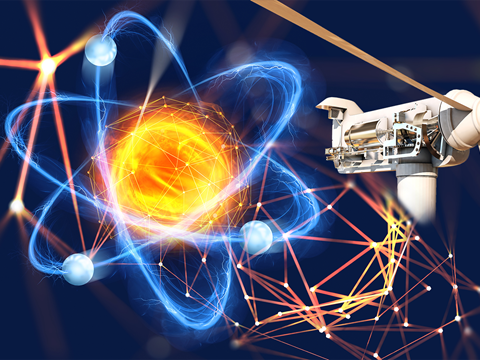
Critical sectors using strategic minerals

Meet the Critical Minerals team
Trusted advice from a dedicated team of experts.

Henk de Hoop
Chief Executive Officer

Beresford Clarke
Managing Director: Technical & Research

Jamie Underwood
Principal Consultant

Dr Jenny Watts
Critical Minerals Technologies Expert

Ismet Soyocak
ESG & Critical Minerals Lead

Thomas Shann Mills
Senior Machine Learning Engineer

Rj Coetzee
Senior Market Analyst: Battery Materials and Technologies

Franklin Avery
Commodity Analyst

How can we help you?
SFA (Oxford) provides bespoke, independent intelligence on the strategic metal markets, specifically tailored to your needs. To find out more about what we can offer you, please contact us.

